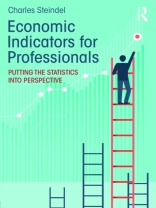We are bombarded with economic numbers: unemployment, retail sales, inflation, GDP—the list goes on and on. Some analyst or another is constantly telling us about an obscure statistic that is the key to our future, or is apparently the indicator that the ‘Fed’ will be using to key off its decisions. With economic numbers playing such a central role in the national and world dialogue on policy and markets, and spilling over into the political arena, a broad review of what they are all about is timely. This book reviews the critical US economic data, and how one may put the numbers into an intellectual structure that will depict evolving economic reality. The work is aimed at those who want and need to get some understanding about how the data contributes to a big picture of the economy and guides policy.
The objective is for the reader to grasp the overall logic of the data—how each piece of the puzzle contributes to our understanding of the overall economy. This is the way the Fed looks at the numbers.
There are other books that go through the economic numbers, but they do so in a ‘bottom-up’ fashion, describing a series in some detail and adding something about how financial markets may respond to it. This book naturally has considerable discussion of series, but views them as part of the overall mosaic, not items of fundamental interest in themselves.












